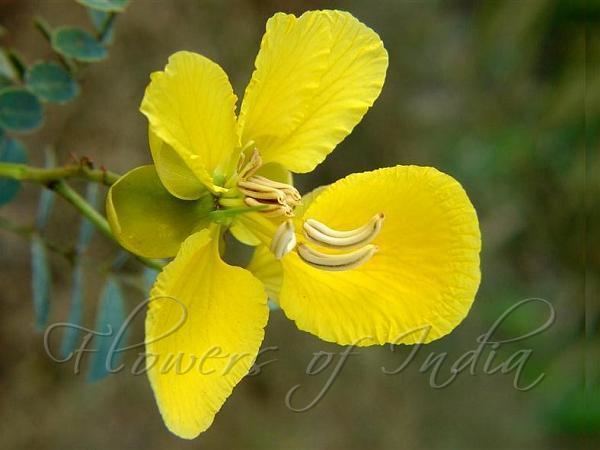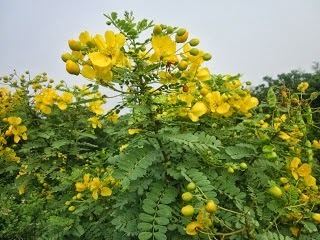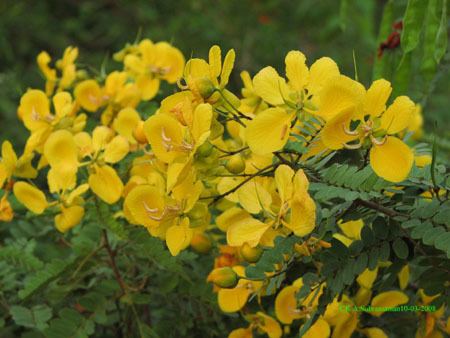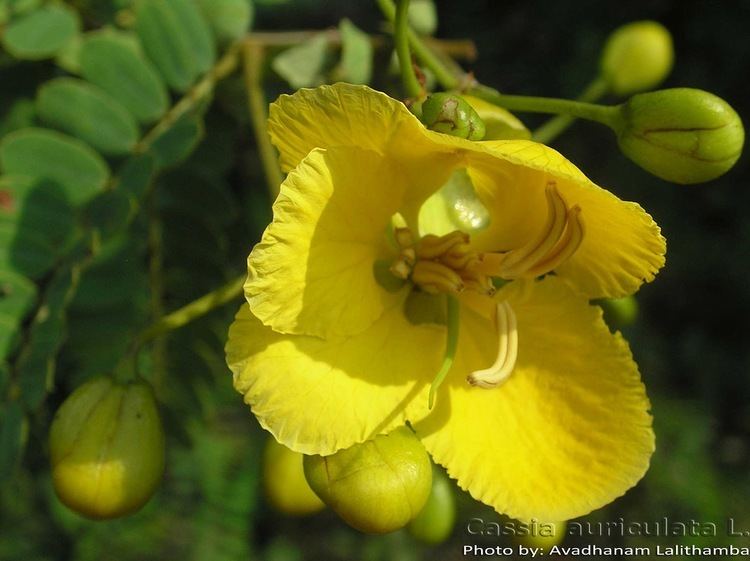Tribe Cassieae | Subtribe Cassiinae Rank Species | |
 | ||
Similar Cassia, Senna, Justicia adhatoda, Senna alata, Caesalpinioideae | ||
Aavaram poo kootu avaram senna senna auriculata gravy
Senna auriculata is a legume tree in the subfamily Caesalpinioideae. It is commonly known by its local names matura tea tree, ranawara or avaram, (Kannada: ಆವರಿಕೆ āvarike, Telugu: తంగేడు taṃgēḍu, Tamil: ஆவாரை āvārai) or the English version avaram senna. It is the State flower of Telangana.
Contents
- Aavaram poo kootu avaram senna senna auriculata gravy
- Health benefits of avaram poo senna auriculata
- Gardens
- Medicinal uses
- References

It occurs in the dry regions of India and Sri Lanka. It is common along the sea coast and the dry zone in Sri Lanka.

Health benefits of avaram poo senna auriculata
Avaram senna is a much branched shrub with smooth cinnamon brown bark and closely pubescent brachlets.

The leaves are alternate, stipulate, paripinnate compound, very numerous, closely placed, rachis 8.8-12.5 cm long, narrowly furrowed, slender, pubescent, with an erect linear gland between the leaflets of each pair, leaflets 16-24, very shortly stalked 2-2.5 cm long 1-1.3 cm broad, slightly overlapping, oval oblong, obtuse, at both ends, mucronate, glabrous or minutely downy, dull green, paler beneath, stipules very large, reniform-rotund, produced at base on side of next petiole into a filliform point and persistent.

Its flowers are irregular, bisexual, bright yellow and large (nearly 5 cm across), the pedicels glabrous and 2.5 cm long. The racemes are few-flowered, short, erect, crowded in axils of upper leaves so as to form a large terminal inflorescence stamens barren; the ovary is superior, unilocular, with marginal ovules.
The fruit is a short legume, 7.5–11 cm long, 1.5 cm broad, oblong, obtuse, tipped with long style base, flat, thin, papery, undulately crimpled, pilose, pale brown. 12-20 seeds per fruit are carried each in its separate cavity.
Gardens
Senna auriculata is suitable for landscaping roadways and home gardens. It tolerates drought and dry conditions, but not much cold. The flowers in racemes are also attractive.
Medicinal uses
This plant is said to contain a cardiac glucoside (sennapicrin) and sap, leaves and bark yield anthraquinones, while the latter contains tannins.
The root is used in decoctions against fevers, diabetes, diseases of urinary system and constipation. The leaves have laxative properties. The dried flowers and flower buds are used as a substitute for tea in case of diabetes patients. It is also believed to improve the complexion in women. The powdered seed is also applied to the eye, in case of chronic purulent conjunctivitis. In Africa the bark and seeds are said to give relief in rheumatism, eye diseases, gonorrhea, diabetes and gout.
The plant has been shown to have antibacterial activity in the laboratory.
